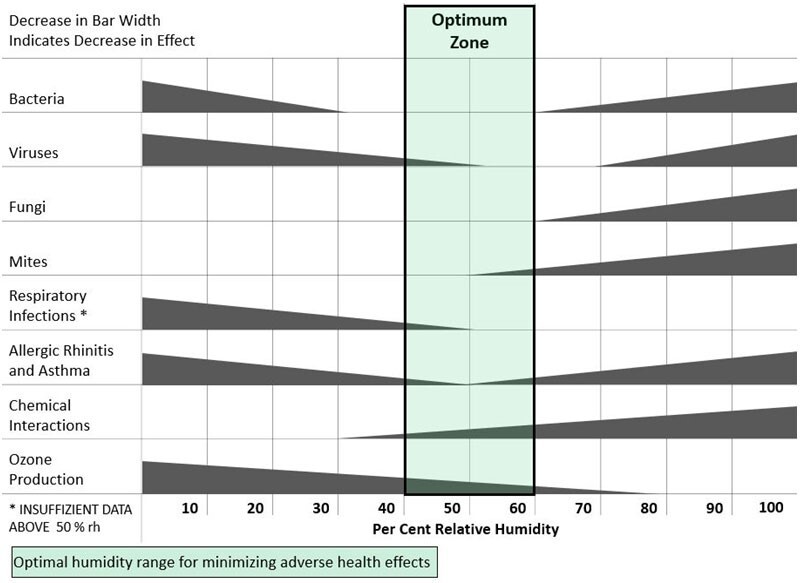Share This Story
The COVID-19 pandemic has forever changed the way we need to construct, operate and manage our school buildings. As happens with most crises, however, the attempts to find quick solutions followed by the rapid spread of misinformation on controlling infectious disease transmission indoors is ever-present.
Fact: Changes to building operations, including the operation of heating, ventilating, and air conditioning systems can significantly reduce airborne exposures.
Our in-house research and operational procedures have identified four basic areas of emphasis that every school’s HVAC systems should address: ventilation, filtration, decontamination, and humidity control.
Ventilation
Quality ventilation that maximizes clean outdoor air delivery and minimizes (or eliminates) the recirculation of unfiltered air can significantly dilute the concentration of airborne pathogens. In fact, it has been widely suggested that all HVAC systems be set to provide 100% clean outdoor air, especially in school buildings.
However, not all facilities are outfitted with air handling equipment that can be so easily adjusted to reach that ideal percentage. What’s more, many school buildings still do not even have a central air handling system to adjust. These factors alone make it imperative to evaluate every building individually to determine the most effective way to enhance overall ventilation.
Further justifying the need for a thorough evaluation is the likelihood that a building’s current heating and cooling systems may not be sized to properly handle a significant increase in outdoor air delivery. Consequently, the systems may no longer be able to adequately control the building’s temperature and humidity levels, causing the indoor air condition to become unacceptable.
One thing is always certain; every building system is unique and requires its own assessment to ensure it is given a tailored solution.
Filtration
Improved filtration can enhance the cleaning efficiency of a building’s recirculated air, and thus be an effective way to remove infectious particles. That said, it is critical that any filter used be designed to restrain very small, harmful particles—a feature that many common, off-the-shelf filters do not possess.
Research has shown that filters rated as ASHRAE MERV-13 or higher (or HEPA rated filters) can be used to properly contain most bacteria and viruses. The MERV rating system tests the filtration of particle sizes down to 0.3 microns, and MERV-13 is the first rating that was able to capture a significant percentage of particles of that size.
Benefits aside, caution should always be exercised when increasing the level of filtration in an air handling system. For instance, MERV-13 and HEPA filters are typically larger and thicker than the more common MERV-6 and MERV-8 filters, which means they may not physically fit into an existing air handling system. Furthermore, increasing the amount of filtration can also cause increases in system resistance—an issue that a fan will be forced to overcome to properly circulate the air.
To overcome these issues or even better, avoid them in the first place, every air handling system should be meticulously evaluated to assess the best course of action.

Figure 1 – Filter Efficiencies
Decontamination
Decontamination methods that properly harness the power of ultraviolet (UV) light can help control dangerous pathogens that often exist on air handling system components (ie. cooling coils, heating coils and filter banks). The key is to obtain control over the length of time in which harmful bacteria and viruses are exposed to that targeted light.
Typically, pathogens must be exposed to UV light for at least two minutes to be effectively killed or eliminated, which means simply aiming UV lights at an air handling system or an airstream in ductwork is not going to cut it. Targeting specific components of a system through surface disinfection where particles could be accumulating over time is always going to be the more effective approach. It should be noted that all UV light is potentially dangerous to humans, and proper safety controls must be considered when installing and operating this equipment.

Figure 2 – UV-C Light on Coil and Filter Bank
In addition to UV light, there are other decontamination methods that are also proving to be effective at killing or controlling dangerous pathogens. Certain types of electronic air cleaners as well as bipolar ionization technology have both recently been identified as potential weapons against the spread of the SARS-COV-2 virus. That said, the research surrounding these methods is ever-evolving, so it is strongly recommended that all decontamination techniques are properly investigated before they are applied.
Humidity Control
Space temperature regulation and humidity control have been proven to significantly reduce the transmission of viruses and bacteria. In fact, research has shown that when a space maintains humidity levels between 40% and 60%, there appears to be little to no transmission of pathogens through the air.
When environment humidity levels go below 40%, the transmission of airborne viruses has been shown to significantly increase, which may be one explanation for the rise of influenza cases during the winter months. Consequently, the addition of ample humidification to air handling systems should be considered in any plan to reduce viral infections.
At a minimum, HVAC system controls should be analyzed, modified and adjusted as necessary to maintain the optimum range of humidity, especially during cooling and heating seasons.

Figure 3 – Effect of Space Humidity (Arundel AV, Sterling EM et a. “Indirect Health Effects of Relative Humidity in Indoor Environments”)
When developing a plan for controlling the spread of pathogens in a school environment, CPL takes a hard stance on setting the facts straight to provide districts with guided input on what matters most—your building’s HVAC systems. Each of these four areas of emphasis should be addressed to help promote safety, reduce airborne exposures, and elicit peace of mind.
